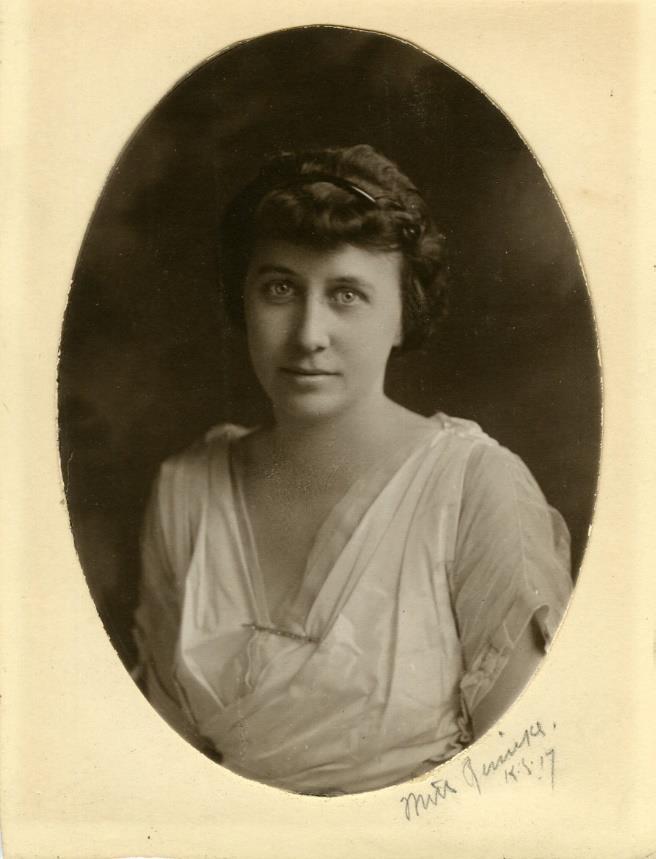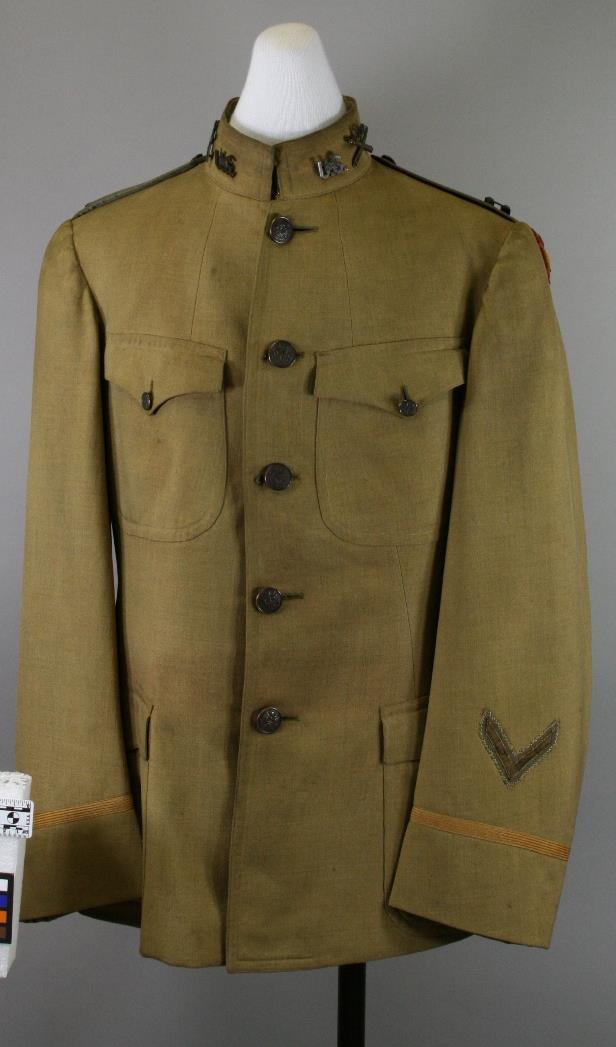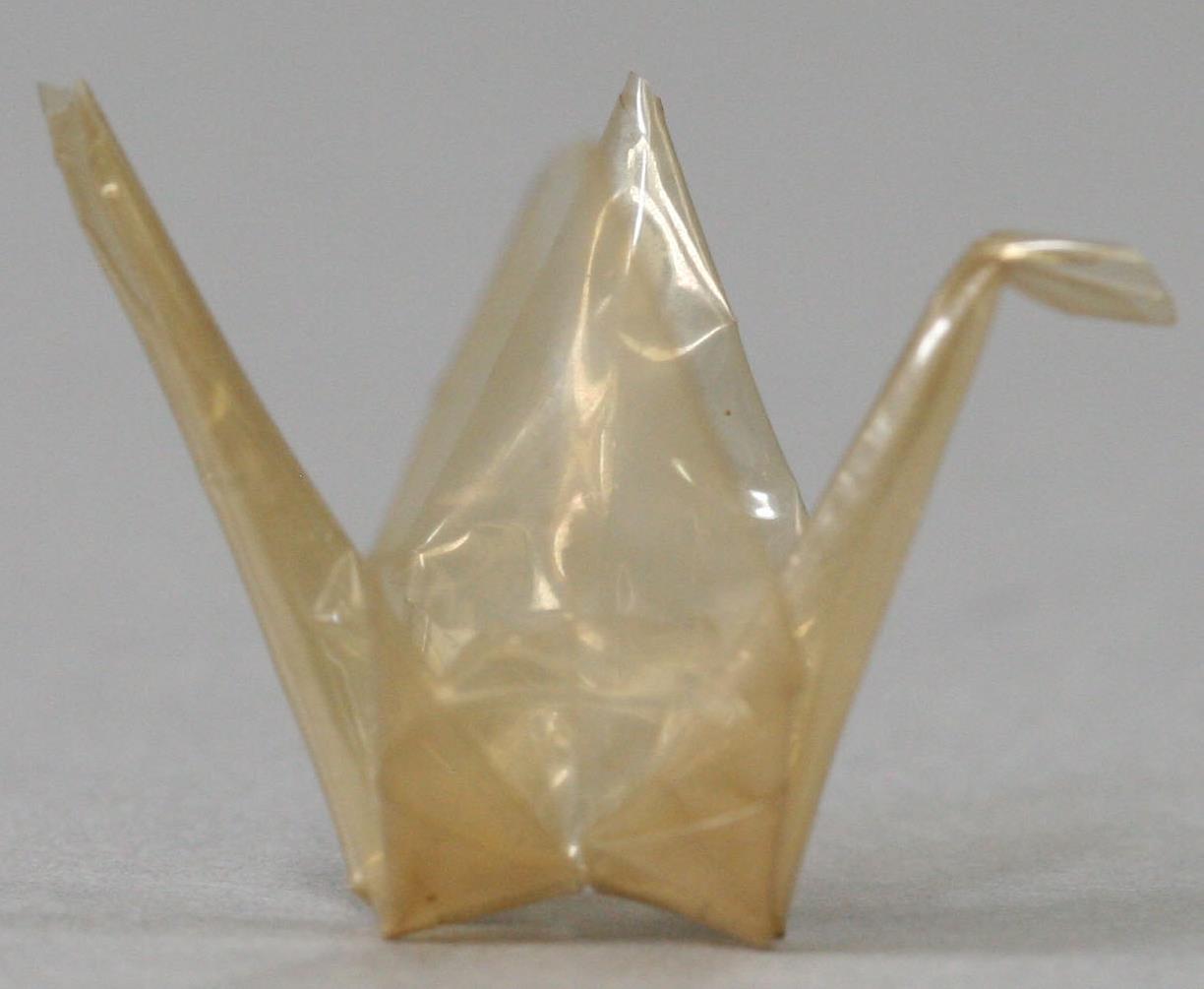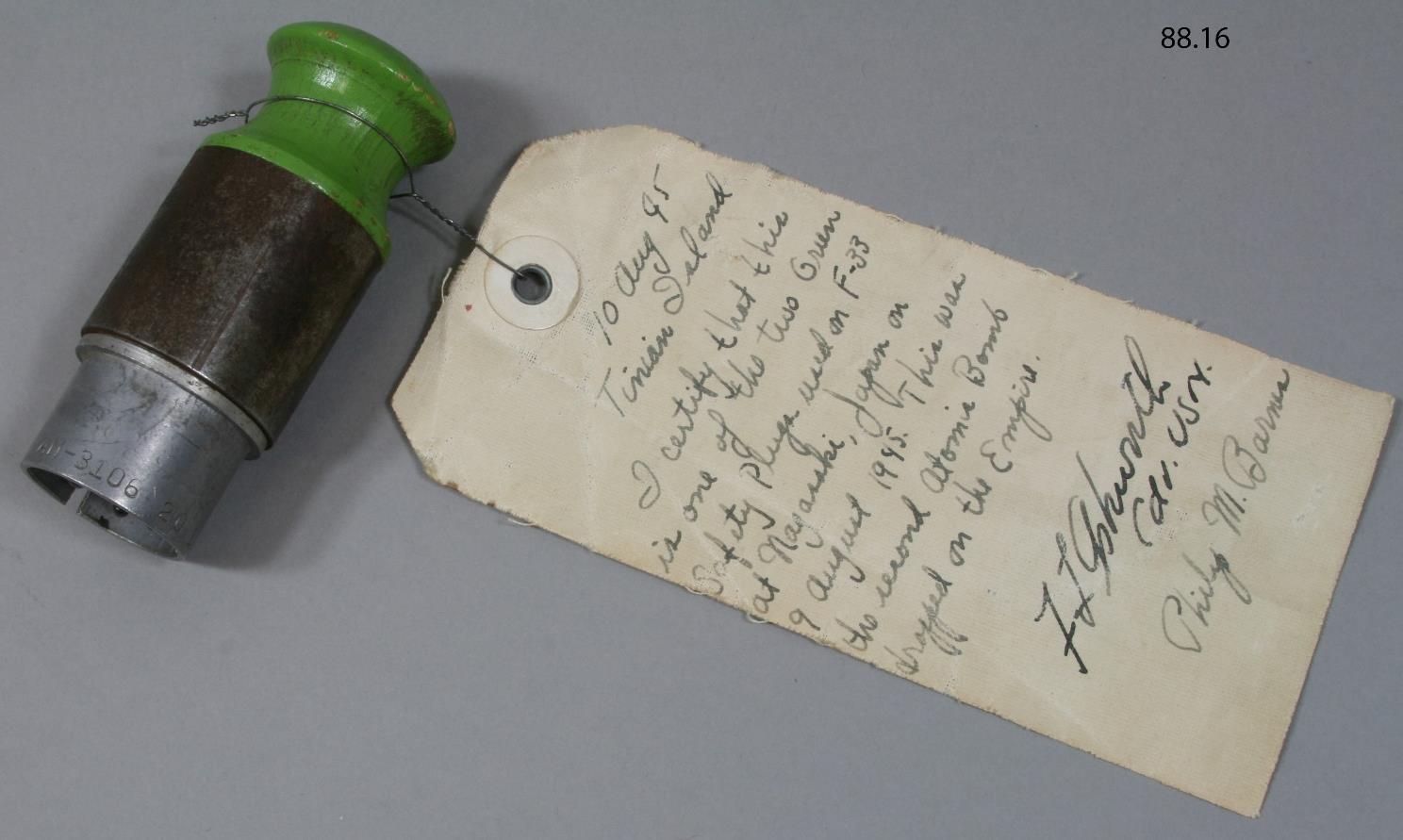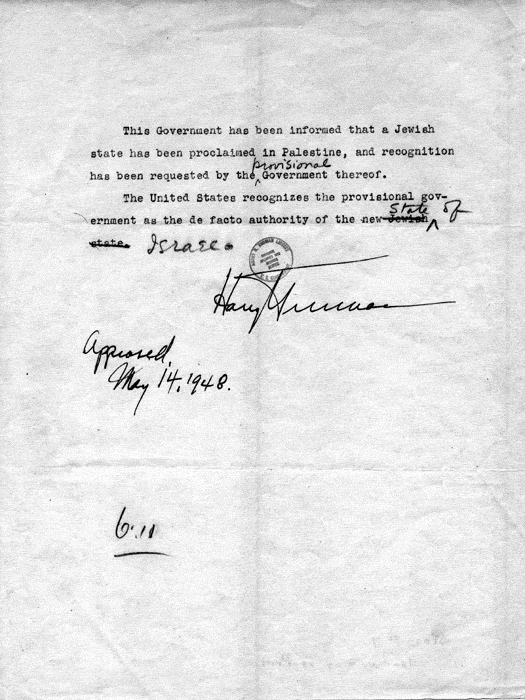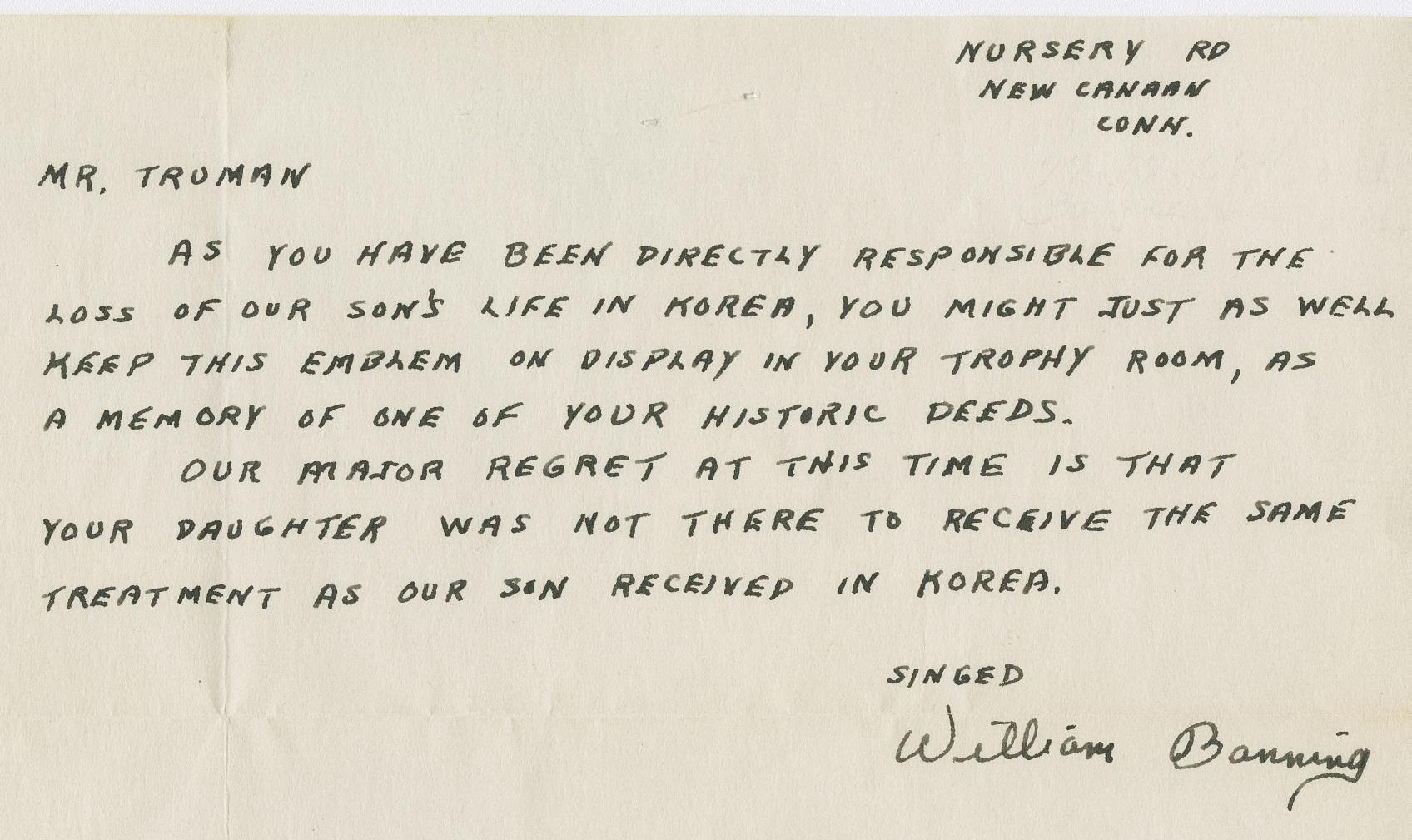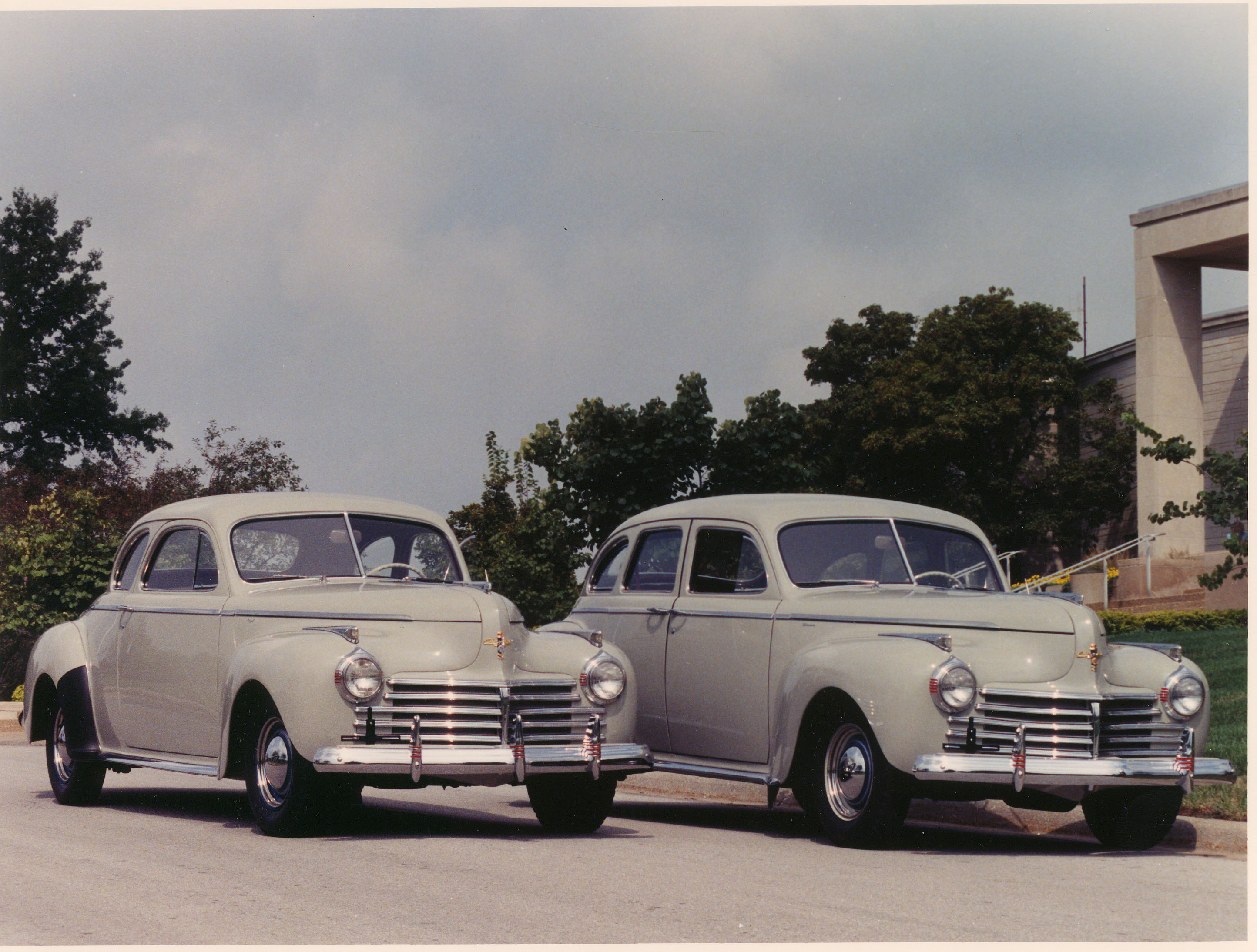|
In 1917, Bess Wallace gave a copy of this picture to Harry as he went off to war. The attached card read: “I’m depending on this to take you to France and back all safe and sound.” Captain Truman carried it throughout the war and President Truman displayed it on his desk for the rest of his life. |
|
|
|
Harry S. Truman purchased this U.S. Officers uniform (1912 pattern) from local Kansas City Tailor William Marks in June 1917 shortly after he was commissioned a First Lieutenant. Truman took the uniform to Camp Doniphan in Fort Sill, Oklahoma and finally to France where he likely wore it in combat. |
|
|
|
Used by Margaret as a baby. |
|
|
|
The crane is made from folded clear cellophane. The crane was folded by Sadako Sasaki, a victim of radiation exposure from the Hiroshima bombing. It is on display behind the green safety plug in the area of the exhibit dealing with dropping of the two atomic bombs. |
|
|
|
Bomb fuse safety plug from "Fat Man," the plutonium bomb dropped on Nagasaki, Japan, on August 9, 1945. The plug helped guard against premature detonation of the atomic bomb. The green plug was removed from the bomb and replaced with a red activating plug after "Bock's Car," the B 29 which carried the bomb, took off on its mission from Tinian. The handwritten tag was signed by the plane's bomb commander and electronics test officer and attached upon completion of the mission. |
|
|
|
Draft of recognition of Israel, May 14, 1948. On display in the Recognition of Israel gallery. |
|
|
|
PFC George C. Banning, Co.B , 5th Infantry Regt., 5th Regimental Combat Team, was killed in action near Sagimak , Korea, May 11, 1953. A Purple Heart medal, ribbon bar, lapel pin and "Gold Star" pin and button were mailed to former President Truman by the deceased soldier's father, William Banning. A handwritten letter written by Mr. Banning accompanied the medal. Truman kept the medal and letter in a drawer in his desk that museum staff found when processing the contents of Truman’s desk after his passing. |
|
|
|
Thomas Hart Benton's mural, "Independence and the Opening of the West". The mural can be found in the Return to Independence gallery. |
|
|
|
This sign sat on Truman’s oval office desk during his presidency. The sign was made in the Federal Reformatory at El Reno, Oklahoma. Fred A. Canfil, then United States Marshal for the Western District of Missouri and a friend of Mr. Truman, saw a similar sign while visiting the Reformatory and asked the Warden if a sign like it could be made for President Truman. The sign was made and mailed to the President on October 2, 1945. Truman famously believed and said that the buck stopped with him, so while he consulted his advisors, he knew that ultimately he had to make the tough calls. |
|
|
|
These two 1941 models were purchased by then Senator Truman. The coupe was purchased for himself; the sedan for Mrs. Truman. Both were delivered to the Truman’s the day after Senator Truman won re-election in November 1940. Both are on display downstairs in the Transportation gallery. |
|
